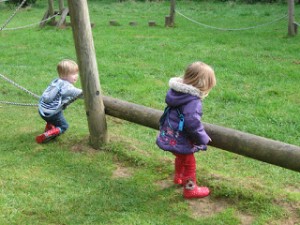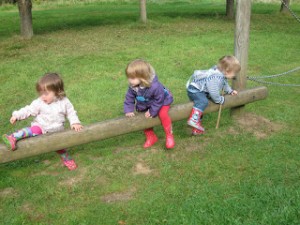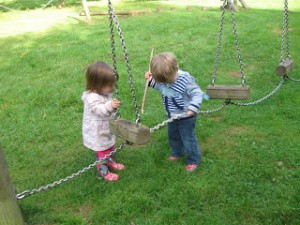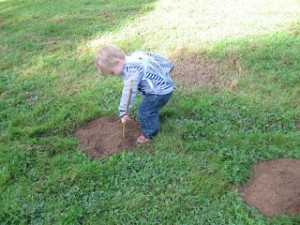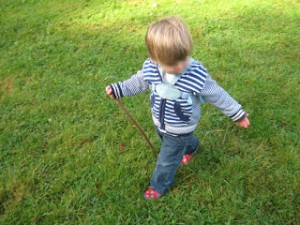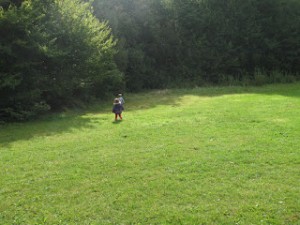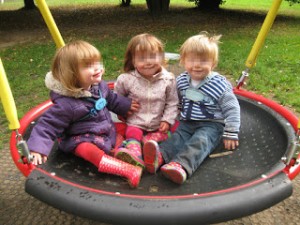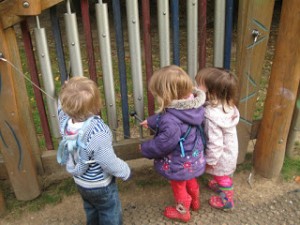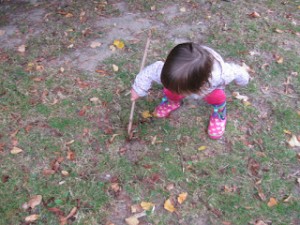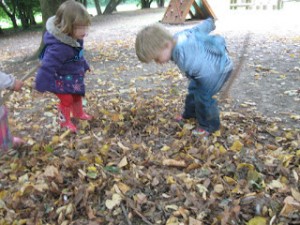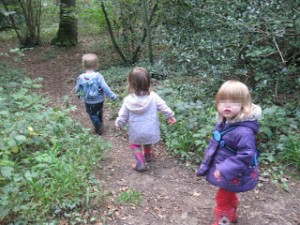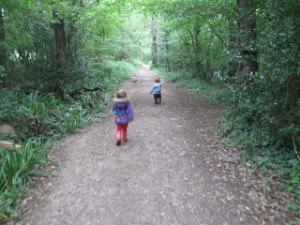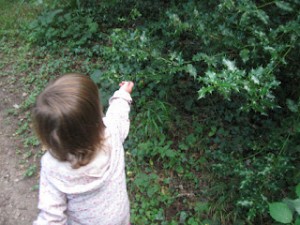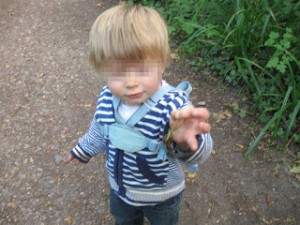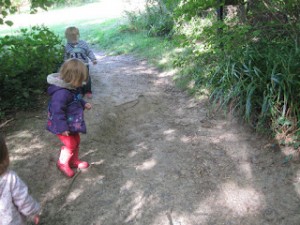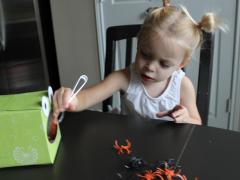We recently found a new forest park to explore. It’s only about a 15 minute drive, but I had no idea it was there!
Alot of the play equipment was too big for the little ones but that didn’t stop them exploring.
They adapted the equipment on offer to their stage of development, enhancing their problem-solving skills as they did so. They are not yet able to balance along these logs, but they enjoyed trying to climb over them. This proved quite tricky as they had to coordinate and sequence the movements of different parts of their body. Obviously those with slightly longer legs had the advantage!
Here the children explored cause and effect, they observed how shaking one part of the chain caused all the other parts to move, more vigorous shaking created more movement!
Some were able to master parts of the equipment. Balance was important here, not just when he was up on the log, but to get up, he had to balance with one foot on quite a small space and be able to pull himself up without falling off.
The children made discoveries. Mole hills is something we have not come across before. Initially the children were fascinated with just standing on top of them, clearly noticing that they were different from the surrounding grassy field.
They then set their own challenges, running between the mole hills.
For some speed was important and they worked at doing this as quickly as they could!
However they were really interested in the mole hills and decided that they required further investigation, ie poking with a stick!
For some it wasn’t much of a challenge and they quickly reached the top. Others had set themselves the challenge of joining them and persevered until they were successsful.
Getting back down proved to be a bit more tricky though. K incorporated techniques he had used in the past to get down safely (he gets lots of practice at getting down being keen on climbing!!)
Others, showing an awareness of the danger and the potential to fall and hurt themselves were more cautious. They adopted their own techniques used in the past to get them out of tricky situations – seeking the help of an adult! Personally I prefer children to adopt K’s technique of incorporating previously used methods, as I think at some point in the future an adult might not be around to help and the children need to learn to get themselves out of tricky situations. So I didn’t help L, instead I encouraged her to observe how K was getting down and to try this method! (note to self, autumn requires wet weather gear even if it’s not raining!)
Once they had mastered the mounds they were keen to go up and down repeatedly.
The children discovered a wide range of sticks allowing them to develop their understanding of different concepts such as big, small, long, short, heavy and light, as well as make comparisons between objects.
Two of the little ones who have been with me for a while are very confident when out and about. I’m fine with this. The have to stay within my sight at all times (and a reasonable distance from me) and I assess the area at the time before allowing them to venture further away, identifying potential hazards such as steep drops, equipment they may climb on (that I won’t be able to get to them in time), as well as others people / dogs using the area. Also a big factor in allowing them to do this has to be that I am confident they will stop and wait when I call them. I recognise that I can’t be ever be 100% certain a child will stop, but generally I am confident that when I call these two, they know to stop and wait, having learnt that if they opt to run or ignore, I will use reins or hold hands, which is not as much fun as exploring on your own! I also think about potential points of interest that may prove too tempting to resist and call them back sooner if necessary.
We did find some equipment that was suitable for our use!
They tried hard to climb onto this log, but it was a bit too challenging.
This was very popular with the children – and me:-)
Pooled water proved just as interesting for some though.
The children discovered another use for sticks, using them to move the leaves around.
They discovered that their actions could cause changes, here more vigourous movements (hence the blur!) resulted in more movement in the leaves.
And then we headed into the woods.
I encouraged the children to make choices as we explored, here choosing which direction we went in.
No choices here though! We were NOT going to this less well trodden path despite the enthusiasm to do so!
Again keen to venture ahead (I had visited the forest park over the summer with my own older children, so I did know what was ahead).
Ah, more sticks! Learning about heavy and stuck!! Problem solving with how to get the desired stick out.
When out and about, the important thing for me is to go at the pace of the children. It doesn’t matter how far we get (we can always come back another day), what is important is that the children get a chance to stop and investigate things that catch their interest. Sometimes, particularly when we are walking along the street, I think it must be so overwhelming for littles ones to have your senses bombarded from so many different angles at once. With all the sights, sounds and smells, it must be difficult to distinguish what is coming from where. For me, the forest is much more relaxed. There is just as much, if not more for the senses, but we have the time and a bit of space to explore them one at a time.
It’s also imporant to take the time to show an interest in the things that catch the children’s attention….
Interest and enthusiasm was waining on the way back to the car, so I drew the children’s attention to the flowers which encouraged them to head in the direction of the car:-)
We discovered we needed to work on our blowing, as blowing dandelions proved tricky and it is important children can do this for speech development.



